- Size
- Smallest
- Small
- Small to Medium
- Medium
- Large
- Giant
- Characteristics
- Smartest
- Hypoallergenic
- Fluffy
- Best Guard
- Best Family
- Best for Kids
- Low Shedding
- Healthiest
- Police Dogs
- Most Calm
- Quietest
- Color
- White
- Black
- Grey
- Brown
- Blue
- Red
- Coat
- Hairless
- Short
- Long
- Origin
- Japan
- China
- Australia
- Germany
- Italy
- United States
- France
- Group
- Hound
- Terrier
- Herding
- Toy
- Working
- Sporting
The Zen Zone: Exploring 5 Relaxing Poses for Dogs
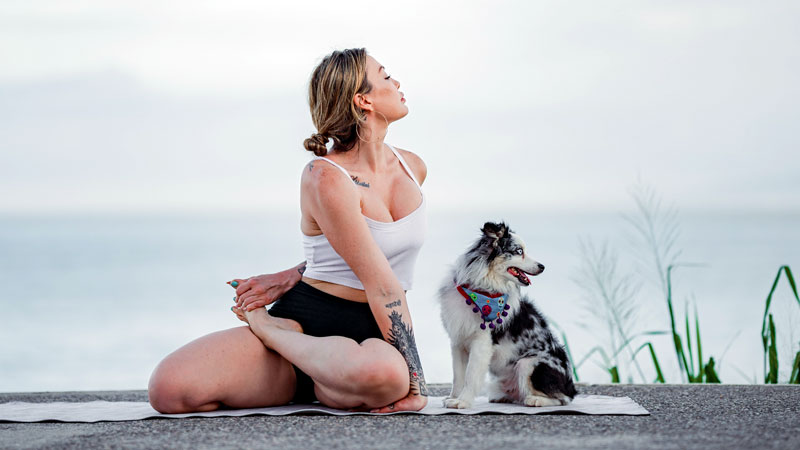
Photo by Karthik Sridasyam on Unsplash
In the hustle and bustle of our daily lives, finding moments of relaxation is crucial not only for humans but also for our beloved canine companions. Dogs, like us, experience stress and tension, and incorporating relaxing poses into their routine can be a game-changer for their overall well-being. In this article, we will delve into various relaxing poses for dogs, shedding light on their benefits and how they contribute to a harmonious life for our furry friends.
Understanding the Need for Relaxation in Dogs
Dogs, despite their seemingly carefree demeanor, can experience stress due to various factors such as changes in their environment, loud noises, separation anxiety, or even underlying health issues. Just as relaxation techniques benefit humans, they can also play a pivotal role in maintaining a dog's mental and physical health. Relaxing poses offer a holistic approach to alleviating stress, promoting flexibility, and fostering a sense of calmness in our canine companions.
1. Child's Pose for Dogs
Inspired by the yoga pose known as Balasana or Child's Pose, this canine adaptation involves the dog sitting back on their haunches with their front paws extended forward and their head resting on the ground. This pose gently stretches the spine, shoulders, and neck, promoting relaxation and releasing tension.
2. Belly-Up Pose
Similar to the human gesture of exposing the belly, the Belly-Up Pose for dogs involves lying on their back with all four legs in the air. This vulnerable position signals trust and relaxation in dogs, and it's particularly effective in reducing stress and promoting a sense of security.
3. Chest Opener Stretch
Dogs can benefit from a chest-opening stretch by extending their front legs forward and dropping their chest to the ground. This pose helps relieve tension in the chest and shoulders, allowing for deeper, more relaxed breathing.
4. Sphinx Pose for Dogs
Inspired by the Sphinx Pose in yoga, this canine version involves the dog lying on their belly with their elbows directly beneath their shoulders. The pose stretches the abdominal muscles and can provide relief for dogs experiencing discomfort in the lower back.
5. Legs Up the Wall Pose
This pose, inspired by its human counterpart, involves placing a dog's hindquarters against a wall while lying on their back. It aids in promoting circulation, reducing swelling in the legs, and inducing a state of relaxation.
Considerations and Tips
Gentle Introductions: Introduce relaxing poses gradually, allowing your dog to become familiar with the movements. Sudden changes may cause stress or discomfort.
Observation and Communication: Pay attention to your dog's body language and cues. If they seem uncomfortable or resist certain poses, adjust or discontinue the activity.
Consistency is Key: Consistent practice is essential for reaping the benefits of relaxing poses. Incorporate these poses into your dog's routine in a gentle and nurturing manner.
Encouraging the Relaxing Pose in Dogs
While the relaxing pose comes naturally to dogs, there are ways you can create an environment that encourages them to take full advantage of it. Here are a few tips:
Provide a Cozy Spot
Ensure that your dog has a comfortable and cozy spot to lie down in. This can be a soft dog bed, a fluffy blanket, or a mat specifically designed for relaxation. Ideally, the spot should be away from any noise or distractions, allowing your dog to fully unwind.
Create a Calm Environment
Set the mood for relaxation by creating a calm and peaceful environment. Dim the lights, play soothing music, or use calming aromatherapy to create a serene atmosphere that promotes relaxation.
Demonstrate Relaxation
Dogs are incredibly perceptive creatures and often mimic the behavior they observe. By practicing relaxation techniques such as deep breathing or assuming the corpse pose yourself, you can demonstrate to your dog the importance of taking time to unwind. They may be more inclined to adopt the relaxing pose themselves.
Be Patient
Some dogs may take longer to fully embrace the relaxing pose, especially if they have had past trauma or stress. Be patient with your furry companion and allow them to find their own rhythm. With time and a consistent calming environment, they will learn to relax more readily.
Conclusion
The relaxing pose for dogs is a natural and instinctual way for them to find relaxation, rest, and rejuvenation. By allowing their bodies to stretch out and assume this restful position, dogs can experience a range of benefits, including muscle relaxation, stress relief, improved digestion, joint relief, enhanced sleep quality, and strengthened bonds with their human companions.
Remember to create a peaceful environment and be patient as your dog learns to fully embrace the relaxing pose. With a little encouragement and a lot of love, your furry friend will find their inner zen and enjoy the countless benefits that come with it.
You May Also Like
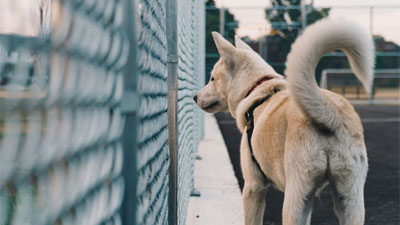 Dog BehaviorWhat Do The Different Dog Tail Positions Mean?
Dog BehaviorWhat Do The Different Dog Tail Positions Mean?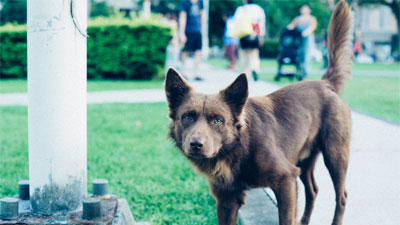 Dog BehaviorHow Do Dogs Show Their Emotions?
Dog BehaviorHow Do Dogs Show Their Emotions?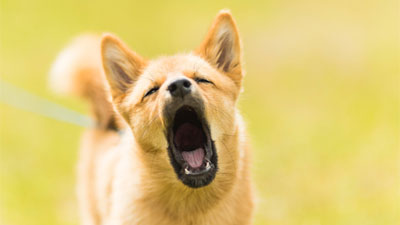 Dog BehaviorThe 6 Common Dog Sounds and Their Meanings
Dog BehaviorThe 6 Common Dog Sounds and Their Meanings Help & AdvicePawsitive Health Habits: A Guide to Keeping Your Dog in Top Shape
Help & AdvicePawsitive Health Habits: A Guide to Keeping Your Dog in Top Shape Useful AccessoriesThe Pros and Cons of Using a Halo Collar for Dog Training
Useful AccessoriesThe Pros and Cons of Using a Halo Collar for Dog Training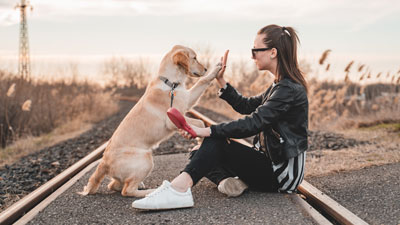 Dog Training TipsHere are the 7 Most Important Dog Commands
Dog Training TipsHere are the 7 Most Important Dog Commands